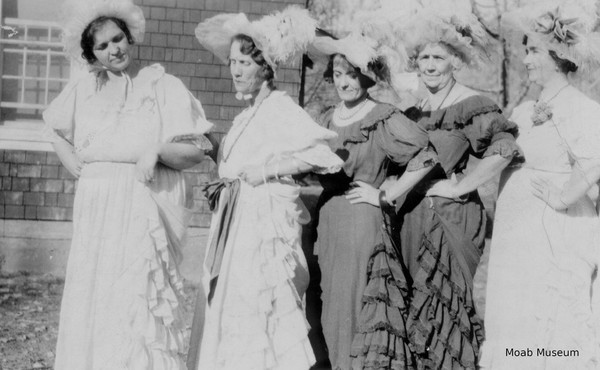Dublin Core
Title
Description
Women’s clubs had a profound impact on Utah’s rural communities throughout the twentieth century. Nationally popular, such clubs connected women through volunteer work, scholarship, and advocacy. The Women’s Literary Club in the southern Utah town of Moab boasted several accomplishments aimed at bettering the community. Members were interested in civic projects such as improving public sanitation, establishing libraries and museums, as well as encouraging volunteer work. These Moab women leveraged their time and relationships to make a lasting impact on their growing town.
Founded in 1897 as the Busy Women's Club, the group initially focused on learning. Early meetings hosted guest speakers who lectured on foreign nations and human rights. However, when the group renamed itself to the Women’s Literary Club in 1914, it marked a new focus on civic improvement and literacy. Members saw their participation as necessary for the health of their small, rural town. One of the Club’s most impressive achievements was their work to establish the public library. Starting in 1915, they brought in roughly 2,500 books and raised over $300 in the span of 30 minutes to purchase a plot of land for the library. The Club grew quickly, with no cap on membership, and attendance rose to 48 members in 1927.
But their work was not always easy. Despite some initial success, funding was difficult to come by due to Moab’s small population and growing concerns over World War I. Nonetheless, the women forged ahead. They opened up a small Club-run community library in the courthouse, and when the building was demolished in 1934, they moved the library to the high school. After that location burned down in 1967, they fought for -- and received! -- federal and county funding to build on the lot they had purchased back in 1915.
The Women’s Literary Club had a profound effect on the development of Moab. In addition to building the library, they worked to establish a Fine Arts Guild, Senior Center, the Moab Museum, and raised money for countless other organizations through community events. Their work used volunteer labor and education to make meaningful change in this corner of Utah.
Creator
Source
_______________
See “The Women’s Literary Club of Moab,” The History Blazer, May 1996; “Women’s Clubs: Women and Volunteer Power, 1868-1926 and Beyond,” National Women’s History Museum, March 17, 2014; “Literary Club Adopts Its Official Song,” Times Independent, April 5, 1928; Moab Museum, “The ‘Busy Women’ who helped build Moab: The Moab Women’s Literary Club Served the Area for a Century,” Moab Sun News, 2021; “The Moab Women’s Literary Club,” Moab Museum; Moab Museum, “Moab History: What Was the Women’s Literary Club?” Moab Sun News, 2023.

